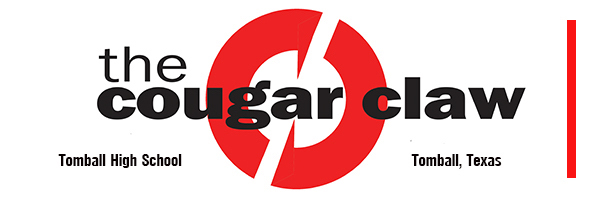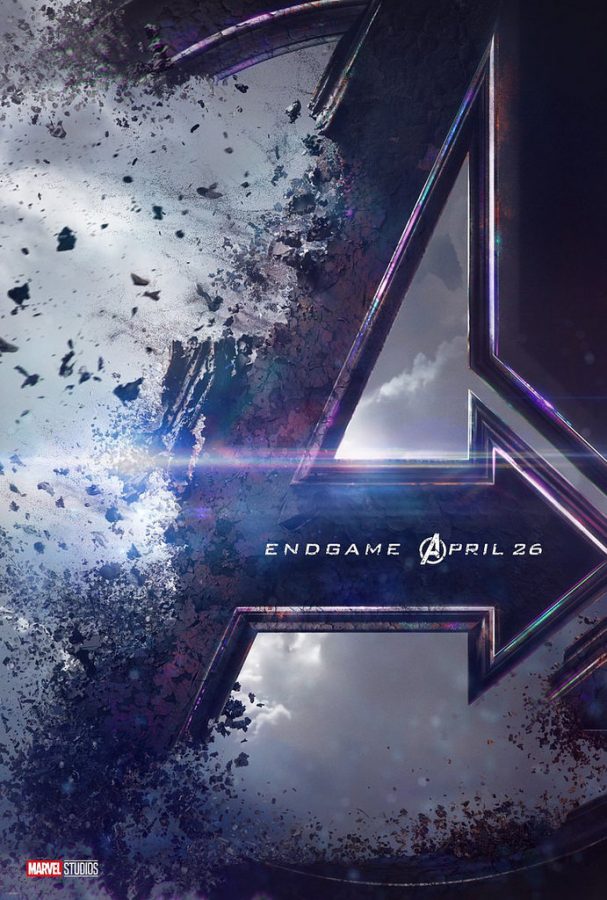11 Years of Marvel with Endgame: A Refresher
March 29, 2019
WARNING: SPOILERS FOR THE ENTIRE MCU UP UNTIL, FOR, AND AFTER ENDGAME.
Introduction:
It has all lead to this. The Marvel Cinematic Universe (MCU) started off in 2008 with Iron Man and has come to be one of the most successful cinematic franchises of the 21st century, and the past 11 years of the MCU is coming to a close with April 26’s Avengers: Endgame.
To review this film in any way, would be to review each MCU film to build up greater context to the importance of Endgame’s success for the future of this “Universe-Orientated” franchise. However, for this particular review, it will be sectioned by each of the current three phases of the MCU throughout the series.
Phase 1 (2008-2012):
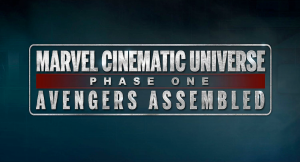
Phase 1 consisted of Iron Man, The Incredible Hulk, Iron Man 2, Thor, Captain America: The First Avenger, and The Avengers. Each of these films were the building grounds for what the MCU was to become, and showed the generations of its time that Marvel’s comic book super heroes (whether iconic in the past or not) could be adapted into successful franchises to tell a multiple stories within the same universe and build each to a bigger conflict to band together and defend Earth as a team.
The first hints of a universe being built was at the post-credits scene at the end of Iron Man where Director of S.H.I.E.L.D.’s Nick Fury (played by Samuel L. Jackson) confronts Tony Stark (played by Robert Downey Jr.) in his home and brings up a plan he has called, “The Avengers Initiative.” This was further confirmed in the post-credit scene to The Incredible Hulk where Tony Stark approaches General Ross in a bar and tells him, “We’re putting together a team.”
Post-credit scenes and cameos of already established characters in Thor and Captain America: The First Avenger brought about the connections with each film which seemed to be building up to a greater conflict at the end of Phase 1. Thor established the God of Thunder’s origin story, as well as the main plot of The Avengers with his adopted brother, Loki.
Captain America: The First Avenger told Steve Rogers’ origin story as the iconic hero, serving as a prequel set during WW2, and established how he was meant to arrive in the current timeline during The Avengers; which was shown in the film’s mid-credits scene showing him found in the ice, and brought back in the current time period, which prepared him for the coming team-up film. The film also provided a promo trailer for The Avengers as a post-credits scene, ending with a black screen with text saying, “Captain America will return in The Avengers.”
In 2012, The Avengers was released and told the story of how the MCU’s current main heroes came together to defend Earth from Loki, and the invasion of the Chitauri alien army. While Bruce Banner’s actor was replaced from Edward Norton to Mark Ruffalo, which did surprise a lot of fans, the chemistry between each person in this film is what gave it the heart it still has for people today. The Avengers concluded Phase 1, and was left open for promises of future MCU films to come with it’s post credits scene revealing a higher threat to come later in the franchise, Thanos. The film was the starting point of what is now known as the MCU’s “Infinity Saga” because in Loki’s invasion, his main weapon (a scepter) of which was given to him by Thanos, was powered by “The Mind Stone” to mind control people to do his bidding throughout the film. This was the first time we as the audience saw and Infinity Stones (along with the Tesseract, powered by “The Space Stone,” introduced in Captain America: The First Avenger) play a major role in the MCU. This would lead to further important plot points throughout the rest of the current MCU with the Saga ending with Avengers: Endgame.
Phase 2 (2013-2015):
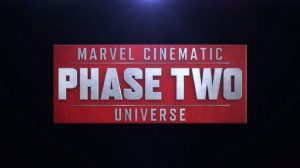
Phase 2 was kicked off with Iron Man 3, and continued with Thor: The Dark World, Captain America: The Winter Soldier, Guardians of the Galaxy, Avengers: Age of Ultron, and Ant-Man. This phase of the MCU is what built up to the higher conflict coming in Phase 3, but also introduced stories in the cosmic areas of the original comic book universe, which contributed to said build-up.
Iron Man 3 told the story of Tony Stark struggling with PTSD after the now-named, “Battle of New York,” and him being hunted down by a villain called, The Manderin, and his struggle to protect the people he loves, and ultimately come up with the decision of whether he should give up being Iron Man, which he does do by removing the shrapnel in his chest so he could live without his Ark Reactor, and be a normal man for the rest of his life. This ultimately got thrown out the window in Age of Ultron, but we choose not to talk about that.
Thor: The Dark World tells of Thor’s journey back to Earth after arresting Loki for the trouble he caused in New York, to protect Jane Foster after she is exposed to a source of a powerful weapon called the Aether, powered by “The Reality Stone,” as they are hunted by Malekith and his army of Dark Elves, and has to get Loki’s help in order to do so.
Captain America: The Winter Soldier tells of the downfall of S.H.I.E.L.D. after Steve Rogers, Nick Fury, Sam Wilson (Falcon), and Black Widow (played by Scarlett Johansson) discover it had been long-timed infiltration of Hydra. The three are sent on the run while being hunted by an assassin with a mask, and a metal arm called The Winter Soldier (who is later revealed to be Rogers’ once-thought to be dead friend Bucky).
Guardians of the Galaxy is the movie which introduced the cosmic story line to the MCU, telling of the coming-together of Star-Lord, Gamora, Drax, Groot, and Rocket the Raccoon as a band of misfits and criminals who join to stop Ronin the Accuser of the alien Kree race, from obtaining an artifact known as “The Power Stone.” This, and the Aether from Thor: The Dark World, which was powered by “The Reality Stone,” introduced later plot points for Phase 3 involving the iconic Infinity Stones.
Avengers: Age of Ultron was the second full-teamed film following the events of Captain America: The Winter Soldier which involves the bad outcome of Tony Stark and Bruce Banner creating an artificial intelligence called Ultron, who is a combination of Stark’s, Banner’s, and Jarvis (Stark’s AI)’s consciousnesses which leads to the now named “Battle of Sokovia.” The film also introduced important characters going into future MCU films such as Scarlett Witch, Vision (a new humanoid android with the combination of Ultron, Stark, Banner, and Jarvis’ intelligence who is powered by “The Mind Stone” and was by Ultron in the film in order to combat the Avengers but ultimately sided with them during the climax and defeated Ultron). As well as Quick Silver, who was sadly killed off at the climax of the film. This ultimately foreshadows a bridge rising between the Avengers among themselves which leads into Phase 3 as well.
Ant-Man was used as comedic filler between Age of Ultron and the start of Phase 3 to introduce the character into the universe. The plot tells of actor Paul Rudd’s Scott Lang, who is a sketchy and skilled-ish thief who is trying to leave that life behind to take care of his daughter (who lives with his ex-wife and step-father), but ultimately tries to steal a new score (which leads to be the Ant-man suit) and is arrested. He is soon taken under the care of actor Michael Douglas’ Hank Pym (the original Ant-Man) and Evangeline Lilly’s Hope van Dyne (Hank’s daughter) in order to keep Corey Stoll’s Darren Cross from recreating Hank’s technology for evil. This introduced the dimension worlds of the MCU with references to the Quantum Realm, which one can only enter if they go subatomic (which is what happened to Michelle Pfeiffer’s Janet van Dyne, i.e., the original Wasp). This is what ultimately happens to Scott at the climax of the film, which he ultimately escapes. The film’s post-credit scene introduced a scene from a Phase 3 film, which foreshadowed a time when Captain America, Falcon, and Bucky needing Ant-Man to team up with them for a coming fight.
Phase 3 (2016-2019):
Phase 3 of the MCU is where we are currently at in the franchise as of March 8th with the release of Captain Marvel, kicking off with Captain America: Civil War, continuing with Doctor Strange, Guardians of the Galaxy: Vol. 2, Spider-Man: Homecoming, Thor: Ragnarok, Black Panther, Avengers: Infinity War, Ant-Man and the Wasp, Captain Marvel, and will be concluding with Avengers: Endgame.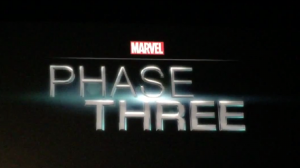
This is the longest phase in the MCU to date, and it all foreshadows to the past 11 years of Marvel heroes and characters coming together in one huge cinematic team. Avengers: Infinity War’s set of heroes was only a taste of how well the franchise can use close to 100 characters in one film, and still create an intriguing story ending with a devastating blow, but more into that in a bit.
Captain America: Civil War is the first of the MANY team-ups in this particular phase of the MCU. It tells of the bridge that started splitting the Avengers apart during Age of Ultron taking its final blow. The Avengers are told that due to past conflicts causing damage to the world, they needed to sign the government’s “Sokovia Accords” which would force them all to only operate under government orders, not allowing them to take action on their own terms. This splits the group with Team Captain America and Team Iron Man. With dangers coming to Bucky, and disagreements leading to many fights, Rogers ultimately teams up with Falcon, Scarlett Witch, Hawkeye, Bucky, and Ant-Man. While Stark teams up with Vision, War Machine, Widow, Black Panther, and Spiderman. It is revealed that the conflict was orchestrated by a survivor of the Battle of Sokovia, and Hydra-follower named Helmut Zemo, who broke the team apart from the inside-out. The final blow was when it revealed that Bucky had killed Tony Starks’ parents when he was younger, which is when the break-up truly happens.
Doctor Strange tells the origin story of Master of the Mystical Arts, Doctor Steven Strange, and introduces the mystical world into the MCU, as well as diving more the dimensions of the universe. This is basically the plot of the film, which shows the higher mysteries of the universe and what promises for the future it holds. In particular, this film introduces the infinity stone known as the “Time Stone.”
Guardians of the Galaxy Vol. 2 takes place several months after the events of the first GOTG film, and shows the team having to defend the Galaxy from the Enclaves (who make hints of Adam Warlock being introduced in the MCU in the future) and the main villain EGO who is Peter Quill’s biological father, and is also a Celestial who is a planet which can take human form to reproduce. The ultimate loss of Vol. 2 was the character of Yondu, Quill’s childhood father-figure, who sacrifices himself to keep Quill alive by suffocating himself in outer-space.This film served as more comedic cosmic filler to give the Guardians a place for the upcoming team up with the Avengers in Infinity War.
Spider-Man: Homecoming was incorporated to the MCU with the Marvel/Sony deal to include Spider-Man’s character in the universe, which was confirmed with his appearance in Civil War. The plot of the film circles back to the aftermath of the Battle for New York in The Avengers where the clean up crew is forced out of work by the FBI and decide to use the Chitauri alien technology to make their own weapons in response. The film flashes over to 6 years later (which is mistaken by the “8 Years Later” title card in the actual film) to the present. Homecoming dives into Peter Parker’s personal life in high school, and how being Spider-Man comes into conflict with his family and friends, as well as his academic success. The main villain, Vulture (played by Josh Keaton), is one of the better villains of the MCU, and this film introduces the “father-son” paradox between Tony Stark and Peter Parker as Stark teaches him to be some kind of an apprentice, or predecessor to the Iron Man legacy.
Thor: Ragnarok takes place two years after the events of Age of Ultron, and just several months after Civil War. Thor learns of the coming Asguardian apocalypse known as Ragnarok once he escapes the hold of a type of Norse mythological devil named Surtur, and returns to Asguard to prepare the civilians. From here, he learns that Loki never died in The Dark World and has been disguised as Odin the whole time and has practically changed the whole outlook of how Asguard’s kingdom is being ran. From here, they go to earth to find where Odin was left, where they shortly meet with Doctor Strange and receive information, and then are transported to a cliff by an ocean somewhere in Europe and find Odin. He tells them that he is dying, and Thor is Asguard’s best defense from Ragnarok, and that Asguard is not a place but a people. The rest of the plot details is the conflict of Thor’s secret older sister Helena (the goddess of death) who destroys Mjölnir, and his struggle of getting back to Asguard from being sent to another world where he suddenly finds the Hulk, who has not been in the form of Bruce Banner for two years since he left Earth at the end of Age of Ultron. The infinity gauntlet which was an Easter egg from the first Thor is revealed to be a fake, which is foreshadowing events coming in Infinity War. Ultimately, after losing an eye and escaping with the other Asguardians, Thor unleashes Surtur on Asguard where Helena is defeated while Asguard is destroyed. This film was more of a dramatic comedy with the direction of director Taika Waititi and involving characters such as Korg, and Valkyrie. The post-credit scene sets up the start of Infinity War with Thanos’ warships intercepting the Asguardian escape ship.
Black Panther is set a week after the events of Civil War and tells an origin story of sorts for T’Challa becoming the true king of Wakanda with a conflict arises from events of the past involving his father, T’Chaka before his death in Civil War, and the decision of whether Wakanda should share their technology with the rest of the world. The main villain, Erik Killmonger, is one of the most incredible and most-able-to-relate-to villains of the MCU before Thanos himself. The film ends with T’Challa winning back his place as king, and sharing resources with the rest of the world in it’s mid-credits scene. The post-credit scene sets up for Infinity War with the reveal of Bucky being in Wakanda since the events of Civil War where he is referred to as “White Wolf,” and is given a new metal arm, which implies that a bigger conflict is on the horizon.
Avengers: Infinity War is set two years after the events of Civil War, and immediately following the events of Thor: Ragnarok where Thanos has taken over the Asguardian ship and has killed majority of the Asguardian people, where there seems to be no sign of Korg or Valkyrie, or over half of the rest of the Asgaurdian people. Thanos has Thor, Heimdall, Loki, and the Hulk captive as he and the Black Order (aka The Children of Thanos) are in search of the Tesseract in order to claim The Space Stone inside it. Ultimately, Loki and Heimdall (who is able to send the Hulk to Earth by the Bifrost) are killed by Thanos and Thor is left on the ship as Thanos destroys it with “The Power Stone” (which he stole from the planet Xandar while wiping out half the planet’s population before the end credits scene of Thor: Ragnarok took place). This film is the culmination of the first two phases of the MCU excluding Ant-Man and Hawkeye who are the only Avengers not in Infinity War. The Avengers team up with The Guardians across three different areas of the universe with Thor teaming up with Rocket and Groot until he gets his new weapon Stormbreaker and return to Earth near the end of the film. Captain America, Black Widow, Falcon, Bruce Banner Scarlett Witch, Black Panther, the Wankandan and Jabari (lead by M’Baku-T’Challa’s “off-and-on” rival) go against the Black Order to protect Vision who is powered by the “Mind Stone” in Wakanda. Iron-Man, Spider-Man, Doctor Strange, Star-Lord, Drax, Mantis, and Nebula go against Thanos for majority of the middle of the film on what remains of his home world Titan. This is the film where Thanos takes victory over the Avengers, using the Infinity Gauntlet to wipe out half of the population of the whole universe. This is now called “The Decimation” in the MCU which claimed majority of the newer established MCU characters as of the middle of Phase 2 up until Infinity War. This is except for confirmed announcements from Director of Marvel’s Kevin Feige and other higher-ranked in the Marvel company as to characters who survived, Ant-Man and Valkyrie for example. However, this film was marketed as the next big team up, but it was surely a well and fleshed-out origin and motivational story for Thanos’ character and this is why this film is one of the greatest in the entire MCU. The post-credit scene of this film shows The Decimation taking place in a city where Nick Fury and Agent Hill fall victim to it as well, but Fury is able to activate a pager device which leave the audience knowing that Captain Marvel will be coming in the near future.
Phase 3.5 (2018-2019):
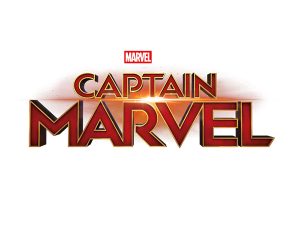
This portion will serve as a placement for these next three films because they are part of Phase 3, but are mostly filler leading up to Avengers: Endgame. This will include both Ant-Man and The Wasp, and Captain Marvel, which are the most recent released films in the MCU post-Infinity War.
The first film released after Infinity War was the sequel to the first Ant-Man following the events of Captain America: Civil War, Ant-Man and The Wasp. This film was filler between Civil War and took place before, during, and after the events of Infinity War, but it was healthy comedic relief for fans after watching most of their favorite Marvel heroes get snapped into dust by Thanos, but more on that later. As said before, after confessing to helping Steve Rogers in Civil War, Scott Lang and Clint Barton were released from prison and put on house arrest for two years, at least that was how long Lang was committed to his house for. Barton’s whereabouts are merely referenced in this film, as well as Infinity War. The plot surrounds once again with people trying to steal Hank Pym’s shrinking tech for their own personal use, this goes especially for the villain of this film, Ghost. Ghost has a condition caused by misuse of energy from the Quantum Realm (which is ultimately the film’s main focus) when she was young, causing her to be phasing in and out of reality, and slowly decaying as her own-self. Scott Lang and Hope van Dyne team up as the Ant-Man and the Wasp to keep the technology safe and also try to rescue Hope’s thought-to-be-dead mother Janet van Dyne from the Quantum Realm. The film ends with the team helping Ghost cure herself from the condition, which fails, but they escape in victory nonetheless. The post-credit scene of this film shows Hank, Janet, and Hope sending Scott into the Quantum Realm to collect Quantum energy, where the three of them fall victim to Thanos’ snap and leaving Scott trapped inside which is setting his character up for Endgame.
To go more into depth of Captain Marvel, it continues from Ant-Man and The Wasp‘s purpose of being filler leading up to Endgame, as it is Carol Danverse’s origin story as becoming the hero herself. There are some good things and some not so great things, but I feel it does succeed in giving the audience a bit of what they need to go before seeing the next Avengers film.
Endgame (April 26, 2019):
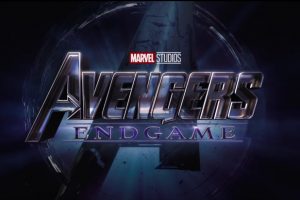
Here we are. The moment we’ve been waiting for, both for 11 years, and for the past ten to fifteen minutes while reading this article. Avengers: Endgame is the next coming installment in the MCU, and is said to be the conclusion to the past 11 years of the current story line, and said to be what opens the doors for future Marvel films and stories in the future. The marketing for Endgame is similar to both Infinity War, and oddly enough to how Star Wars: Empire Strikes Back was marketed. This meaning that elements in the very limited number of trailers of which have been recently released are purposely edited to be misleading. The directors of Endgame, as well as Civil War and Infinity War, the Russo Brothers (Anthony and Joe Russo), as well as Kevin Feige have only confirmed that the first fifteen to twenty minutes of the film will be shown in the released footage. Before recently, the Russo Brothers and most of the cast of the film refused to announce the film’s title because it was a huge spoiler for the film.
The term, “Endgame” is something that has brought up before in past MCU films. In Age of Ultron, Tony Stark, when defending his motives behind creating Ultron, pointed his finger towards the ceiling (which is referring to whatever threats were to come from the cosmos) and said, “That’s the Endgame.” And in Infinity War, after being defeated by Thanos on Titan, before turning to dust, Doctor Strange tells Stark that giving Thanos the “Time Stone” to save Stark’s life was the only way, and also said, “We’re in the Endgame now.” This may refer back to the 14,000,605 outcomes Strange looked into during Infinity War, where only one resulted in the Avengers winning the fight. This plot detail may play a huge role in the events of Endgame when the film is released.
With aspects of the Quantum Realm from Ant-Man and The Wasp being said to play a role in the film, it isn’t too much of an exaggeration to consider the possibility of time-travel to also play a role as well. Recently released trailers of Endgame don’t show to necessarily deny this theory based on brief images of new armor of white and red being worn by the Avengers in the most recent trailers.
This is to say that not much of the film as a whole is being spoiled in these trailers, which is smart on the Russo Brothers’ behalf. This being because it has been confirmed by Marvel that Endgame will be a total of 3 hours and 2 minutes long, which will mark it as the longest run time for an MCU film.
That leaves endless amounts of story to be told for the rest of the film, allowing to still be as much of a shocker for fans at the times of its coming release.
It will be the last time we will see Robert Downey Jr., Chris Evans, Chris Hemsworth, and Mark Ruffalo suit up as Iron-Man, Captain America, Thor, and the Hulk as their contract deals are up after this film is released and they have already made plans to move on to other projects besides the MCU. Meaning seeing them in Endgame promises to be a respectful ending to each of their character’s story arcs. They will be forever missed in this universe as they go off to seek after others.
That being said, it is needless to say that details surrounding Phase 4 and future films in the MCU have been confirmed by Marvel months before Endgame even had its own title name.
Phase 4 (What we already know):
Trailers for one film after Avengers: Endgame has been recently released for this year, marking the third film for 2019 being the sequel to Spider-man: Homecoming, entitled Spider-man: Far From Home. Based on the fact the Tom Holland’s character as the “Friendly-Neighborhood-Webslinger” was dusted in The Decimation, it isn’t a far fetch to assume that Thanos’ actions in Infinity War will be undone during Endgame.
Yes, that last statement may be a huge spoiler, but I would highly encourage anyone who is Marvel nerd such as myself to still go see Endgame, as well as each of the films in this story because they are all great in their own aspect, and you can build your own opinion over the entire cinematic universe yourself.
In recent months since Infinity War’s release, Marvel has confirmed sequels for Doctor Strange, Black Panther, a Young Avengers movie, Guardians of the Galaxy Vol. 3 (with the recent rehiring of the trilogy’s original director James Gunn), as well as an Eternals movie in the future. Including prequel shows coming to Disney’s streaming service under development Disney + for Loki, Scarlett Witch, Falcon, Bucky, and Vision. The release dates of each have not yet been confirmed by Marvel.
Developments of a prequel Black Widow film has been confirmed for a while since a little bit before the release of Infinity War, but its release date has not yet been announced.
With the long-lasting Marvel/FOX deal now being finished, Marvel now has the power to introduce the X-Men, the Fantastic Four, and many other original aspects from the comics that 21st Century FOX gained rights to when they began adapting the Fantastic Four and X-Men movies. This leaves many doors to possible MCU films to introduce these characters to in the future.
As far as the years to be looking out for these projects, the only confirmed years Marvel has been released have been from 2019-2024 at the least, however, it is not to say that Marvel does not plan to continue this universe for many years in the future.
Conclusion:
Hopefully this long read has refreshed your knowledge of the MCU so you can save your time trying to watch all the films yourself until the time of Endgame’s release. However, it is highly encouraged to watch them, including any TV series released within the same universe. Although, they are not mentioned in the films they are still fun to watch and if you have never seen any of these films, don’t go see the new movie unaware of any of the fantastic stories that came before it.

